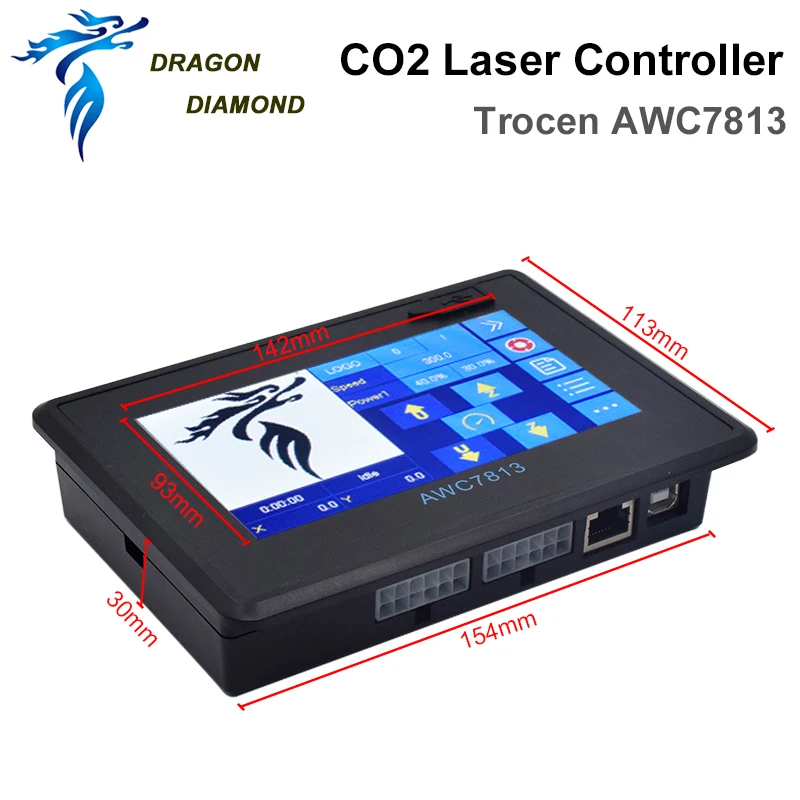
Genuine D-FC556 Original Developer 6LK436070 6LK4360710 6LK4360720 6LK436073 for Toshiba 5506 6506 7506 5516 6516 7516AC
Price: USD 209.98 - USD 241.36Category: Office Electronics
Shop now and enjoy exclusive discounts! Genuine D-FC556 Original Developer 6LK436070 6LK4360710 6LK4360720 6LK436073 for Toshiba 5506 6506 7506 5516 6516 7516AC. Experience the quality Office Electronics!

Standard Set Trocen AWC7813 Co2 Laser Controller System for Co2 Laser Engraving Cutting Machine
Price: USD 192.00 - USD 240.00Category: Metal Processing Equipment & Accessories
Shop now and enjoy exclusive discounts! Standard Set Trocen AWC7813 Co2 Laser Controller System for Co2 Laser Engraving Cutting Machine. Experience the quality Metal Processing Equipment & Accessories!

For YAMAHA TMAX530 TMAX 530 Motorcycle Footrest Footboard Floorboards Pegs Plate Holder T-MAX 530 XP530 2012 2013 2014 2015 2016
Price: USD 48.00 - USD 240.00Category: Modification&Protection
Shop now and enjoy exclusive discounts! For YAMAHA TMAX530 TMAX 530 Motorcycle Footrest Footboard Floorboards Pegs Plate Holder T-MAX 530 XP530 2012 2013 2014 2015 2016. Experience the quality Modification&Protection!

8 Core 99% 7n Pure Silver Palladium Earphone Cable For HEDD Air Motion Transformer HEDDphone ONE LN008386
Price: USD 60.00 - USD 240.00Category: Portable Audio & Video
Shop now and enjoy exclusive discounts! 8 Core 99% 7n Pure Silver Palladium Earphone Cable For HEDD Air Motion Transformer HEDDphone ONE LN008386. Experience the quality Portable Audio & Video!

Customized Luxurious Long Evening Dresses for Special Occasions Chiffon Floor-Length Mermaid Dubai Women Gala Party Dress 2025
Price: USD 119.90 - USD 239.80Category: Special Occasion Dresses
Shop now and enjoy exclusive discounts! Customized Luxurious Long Evening Dresses for Special Occasions Chiffon Floor-Length Mermaid Dubai Women Gala Party Dress 2025. Experience the quality Special Occasion Dresses!

5Y Hot Sale Fashion Design African High Quality Groom Embroidery Beads Lace Sequins Beaded Fabrics For Wedding or Party Dress
Price: USD 158.40 - USD 240.00Category: Arts,Crafts & Sewing
Shop now and enjoy exclusive discounts! 5Y Hot Sale Fashion Design African High Quality Groom Embroidery Beads Lace Sequins Beaded Fabrics For Wedding or Party Dress. Experience the quality Arts,Crafts & Sewing!

High Quality Headlights Suitable for Mercedes Benz Class a W177 LED Headlights 2020-2023 Mercedes Benz W177 LED Headlights
Price: USD 227.98 - USD 239.98Category: Other Vehicle Parts & Accessories
Shop now and enjoy exclusive discounts! High Quality Headlights Suitable for Mercedes Benz Class a W177 LED Headlights 2020-2023 Mercedes Benz W177 LED Headlights. Experience the quality Other Vehicle Parts & Accessories!

Dog Kennel Outdoor Dog House with Roof Waterproof Cover, Dog Enclosures Pet Crate Cage Playpen
Price: USD 120.94 - USD 241.89Category: Pet Products
Shop now and enjoy exclusive discounts! Dog Kennel Outdoor Dog House with Roof Waterproof Cover, Dog Enclosures Pet Crate Cage Playpen. Experience the quality Pet Products!
